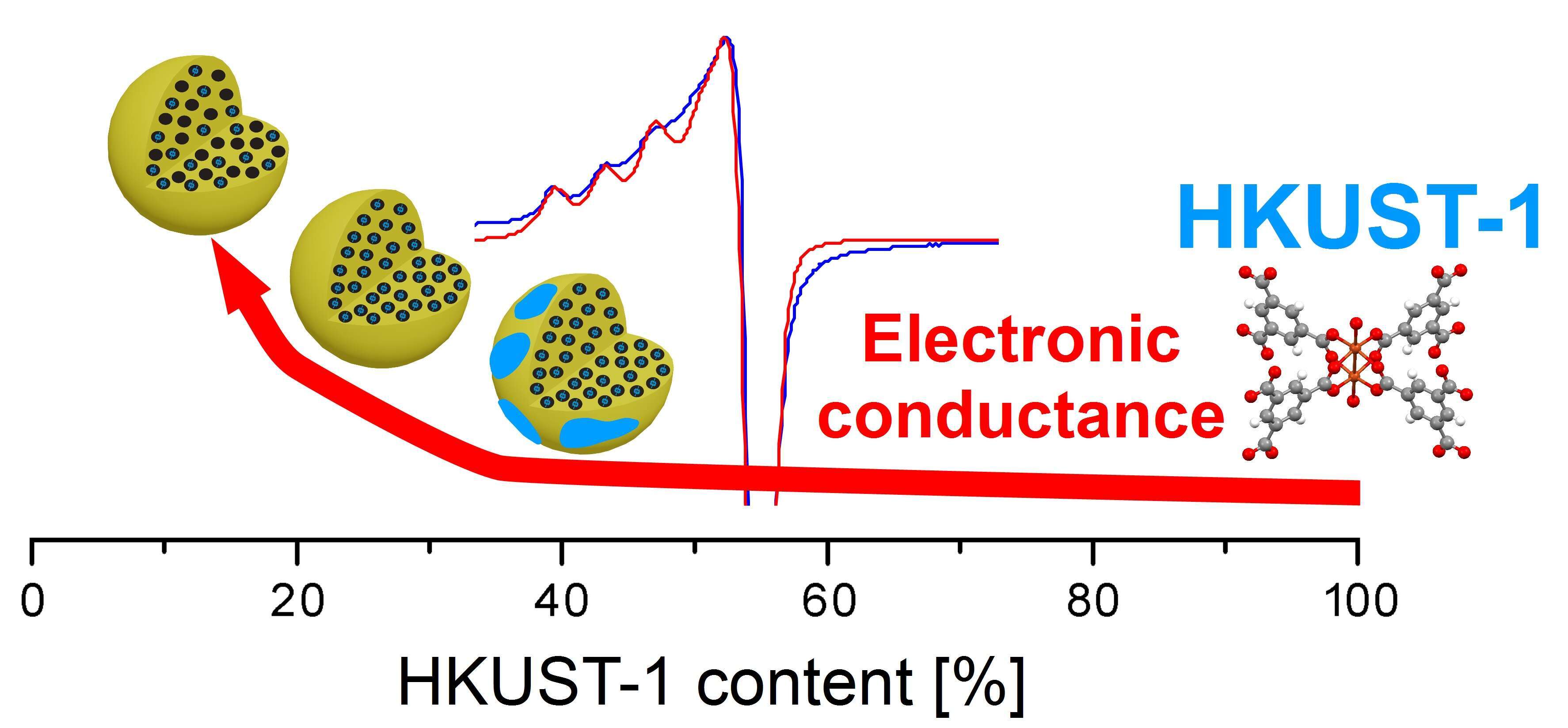
ELECTRIC CONDUCTIVITY OF METAL ORGANIC FRAMEWORK-BASED COMPOSITIONS
Metal Organic Frameworks` (MOFs) unique properties make them superb candidates for many high-tech applications. However, their non-conducting character suppresses their practical utilization in electronic and energy systems. Using the familiar HKUST-1 MOF as a model system, we present a new method of gaining electrical conductivity to otherwise non-conducting MOFs by preparing MOF nanoparticles within the conducting matrix of mesoporous activated carbon (AC). This composite material was studied by X-ray diffraction (XRD), scanning electron microscopy (SEM), gas adsorption measurements, and electron paramagnetic resonance (EPR) spectroscopy. We show that MOF nanoparticles grown within the carbon matrix maintain their original unique crystalline and surface area. Owing to the composition process, EPR measurements surprisingly revealed a copper signal that was not achieved so far. We could analyze for the first time the complex EPR response of HKUST-1. We demonstrate the high conductivity of the MOF composite and discuss various factors that are responsible for these results. Finally, we present an optional application for using the conductive MOF composite as a high-performance electrode for pseudo capacitors.
Powered by Eventact EMS